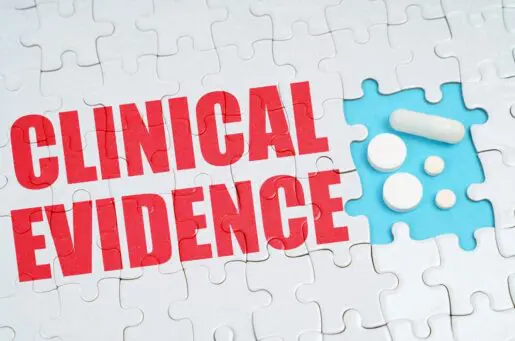Bioethics Forum Essay
Masks Are Not Created Equal
Finally, the Centers for Disease Control and Prevention is working on developing standards for masks to see which ones actually block viruses. In the meantime, though, we should all be acting on what we do know about effectiveness. I cringe when I see a cashier at a grocery store or a delivery person wearing a cloth mask. Why? Because cashiers and delivery people are at high risk of exposure to Covid-19, and cloth masks are substandard masks. Surgical masks (also called medical masks) have a waterproof layer, and are far more effective than cloth masks at preventing illness. Sure, any mask will have some effect, but cloth masks are less than half as effective as surgical masks at protecting the person wearing the mask.
People seem to be aware that N95 masks are better than cloth masks, but why aren’t public health people telling people to wear the masks that we know work better than cloth? Wearing a surgical mask or a N95 mask is the virus prevention measure with the most evidence of benefit. N95 masks may be more effective in high-risk medical environments (although quality varies). In most circumstances, however, surgical masks are not far behind N-95s in terms of effectiveness. Systematic reviews of numerous studies have found that in real-life settings, surgical masks are about as effective as N 95 masks at reducing the risk of acquiring respiratory illnesses, including flu; another systematic review found similar results.
In contrast, a recent Danish study that specifically looked at Covid-19 transmission found that mask-wearers and people who don’t wear masks had similar risk of viral infection. This study has been both vilified and celebrated, depending on which side of the mask debate you are on, but both the attackers and celebrants misinterpret the study. The Danish study was performed during a time when social distancing and other preventive measures were widespread, and both mask use and transmission rates were low. Under those circumstances, mask use did not reduce transmission to mask-wearers by half; the study was not designed to detect, say, a 40% reduction in risk. The Danish study is entirely consistent with the concept that widespread masking is vitally important to reducing risks in populations.
A recent study by the Centers for Disease Control and Prevention adds to this evidence.
On July 3, 2020, an executive order from the governor of Kansas mandated the use of face coverings in public spaces. A law passed only weeks earlier allowed counties to adopt less stringent public health measures than required by the state. Two dozen counties took advantage of the new law to ignore the governor’s executive order, while 81 counties, comprising about two-thirds of the state’s population, complied with the order to mask up.
Five weeks later, new daily cases of COVID-19 had decreased every day in the counties that complied with a mask mandate and increased every day among counties without a mask mandate. This was particularly stunning because rates of Covid-19 were higher to start with in the counties that chose to follow the mask mandate. Some counties had already restricted the size of gatherings and the number of people in restaurants, but an additional analysis found that counties that just went with the mask mandate experienced similar decreases to counties that adopted a multimodal approach.
Epidemiologists call this sort of experience a natural experiment. Assigning people to use or avoid masks during a pandemic of a dangerous infectious disease would be unethical, but Kansas has given us a gift of data that allows researchers to compare mandated mask use versus free choice in geographic chunks across a single state. Some people in counties that didn’t mandate masks wore them anyway, making a difference harder to spot. The fact that a significant difference was seen anyway is great evidence that requiring mask use lowers infection rates while laissez-faire I’ll-wear-a-mask-when-I-feel-like-it freestyling does not work. The Kansas study backs up another study that showed a decrease in rates of Covid-19 cases in Washington, D.C. and 15 states that mandated mask use, compared to states that did not.
Surgical masks are readily available and cost about 50 cents each. It is urgently important that postal workers, delivery people, cashiers, restaurant workers, factory workers, security guards and anyone whose work involves regular contact with other people should use surgical masks, which are two to three times as effective as cloth masks.
Better yet, apply that to everyone. If you are going to a grocery store, drugstore, gym, place of worship, restaurant or–let’s face it, any place indoors with other people not of your household– wear a surgical mask.
Wear surgical masks, not cloth masks, whenever you are inside with people outside your home, and change them when they are damp. Moisture reduces efficacy. Also, get ASTM-certified Level 2 or Level 3 masks; The FDA has a list of acceptable surgical and N-95 masks on its website. Save the cute cloth masks for outdoors, where the risk of transmission is very low. A study of 7,324 Covid cases in China found only one outdoor outbreak, involving two people in extended contact.
Because some people with Covid-19 have no symptoms, everyone should consider themselves as potentially infectious. The more layers of material between humans talking to or breathing on each other, the fewer infections we will have. The less shared air between people, the better.
When we all wear masks, infection rates go down.
Adriane Fugh-Berman, MD, is a professor of pharmacology and physiology at Georgetown University Medical Center and director of PharmedOut, a Georgetown University Medical Center project that advances evidence-based prescribing and educates health care professionals about pharmaceutical marketing practices. She is a paid expert witness at the request of plaintiffs in litigation regarding pharmaceutical and medical device marketing practices. Twitter: @Pharmed_Out.














Is there actually a surplus of PPE available now? Back in the spring there was a publicized shortage of PPE for healthcare workers. At that time it was recommended that the general public wear cloth masks in order to save the medical grade PPE for those within the medical field. Even in August, when I went to the dentist, one of the hygienists shared with me that they were still having trouble with getting enough PPE for themselves. If there is a shortage, who should PPE supplies be allocated to?
Some cloth masks may be better than surgical masks
Thank you for this article. There is a great deal of misunderstanding about the effectiveness of surgical masks. I believe that public health messaging holds some responsibility for this because, at the beginning of the pandemic, surgical masks were in short supply and people were told NOT to buy them. While surgical masks seem to be widely available now, many of them are not US manufactured and do not have ASTM ratings. This makes it difficult for the average consumer to evaluate the quality of the specific surgical mask they are purchasing. In fact, many of the three ply masks available in my area are specifically labeled “not for medical use.” This is in small print and the average consumer, when told to purchase a surgical mask, could easily not notice this. They see a blue three-ply mask and think it is what they need.
I am disappointed that your article fails to mention that the thin layer of NWPP in surgical masks is intended for a single use and breaks down rapidly when exposed to moisture (breath.). Many people have cloth masks make with three layers, one or two layers being a thicker NWPP that doesn’t degrade as rapidly as the NWPP in surgical masks. Other masks are made with a pocket into which a NWPP filter can be inserted. For many people, even those you mention with public facing jobs, a well made cloth mask one or two layers of NWPP or a filter pocket may be better than a surgical mask that does not meet ASTM standards or that is worn well beyond the “single use” for which surgical masks have been evaluated.
The article is written as if one size fit all. As the prior comment pointed out, there are differences among surgical masks. Likewise there are many variations among cloth masks. I belong to several groups of mask makers and there are constant discussions about how many layers, what is most effective in the middle layer, how to achieve the best fit and what the studies are showing. The people sewing masks often started when very little PPE was available on the market and they were filling a big gap. Having seen no medical grade masks for children, you should follow the discussions about how to fit children’s masks and to create masks for toddlers.
It is good for the CDC to evaluate materials. Let’s hope they put out recommendations to help the very large world of people sewing cloth masks.
As an aside, it is tough to use the medical grade masks to accessorize. I keep watching how Nancy Pelosi uses her masks to accentuate her suits.
This is vital information about the extra protection afforded by surgical masks. Thank you Dr. Fugh Berman for your article and to the Hasting Center for publishing it. I hope there is a way to get this information to our new CDC Director Dr. Rochelle Walensky.
Center. How long is it going to take for the CDC to
post updated recommendations. I’d like to see the ethical dimension of this issue properly framed and communicated by
the bio ethicist community, the journalism community and the medical community.